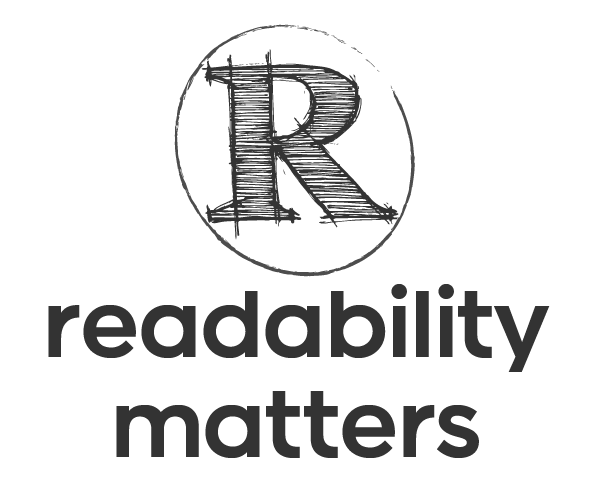Technology provides an opportunity for personalized learning, which moves from a one-format-fits-all approach to one tailored for the student. Children learning to read and older students reading to learn benefit from using apps and websites that enable the reader to personalize their text format. They can instantly improve their speed, accuracy, and comprehension.
Reading success creates more motivation to read, which in turn creates more learning, and the virtuous cycle repeats. What might our students achieve when they experience increased reading success? Will greater reading confidence generate more success as students identify themselves as “good readers”? How many more students might be willing to go further in the education system if reading experiences are improved? What more might these students do with this increased capacity for learning?
TYPOGRAPHIC FEATURES ARE CRITICAL
Letter shape, size and spacing all meaningfully impact reading fluency and comprehension. Better readability is the gateway to enhanced learning and greater productivity.
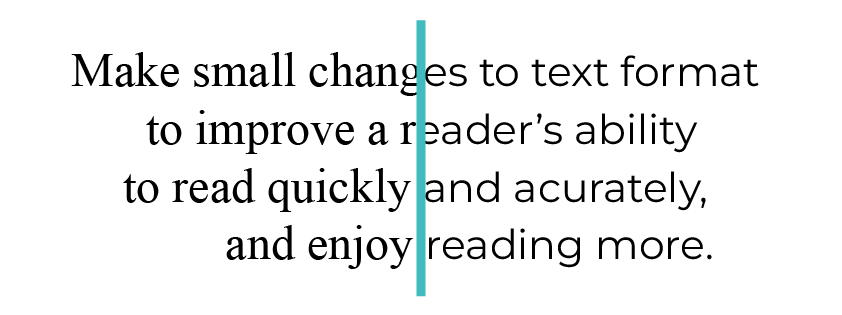
Play in the Readability Features Sandbox to learn more.
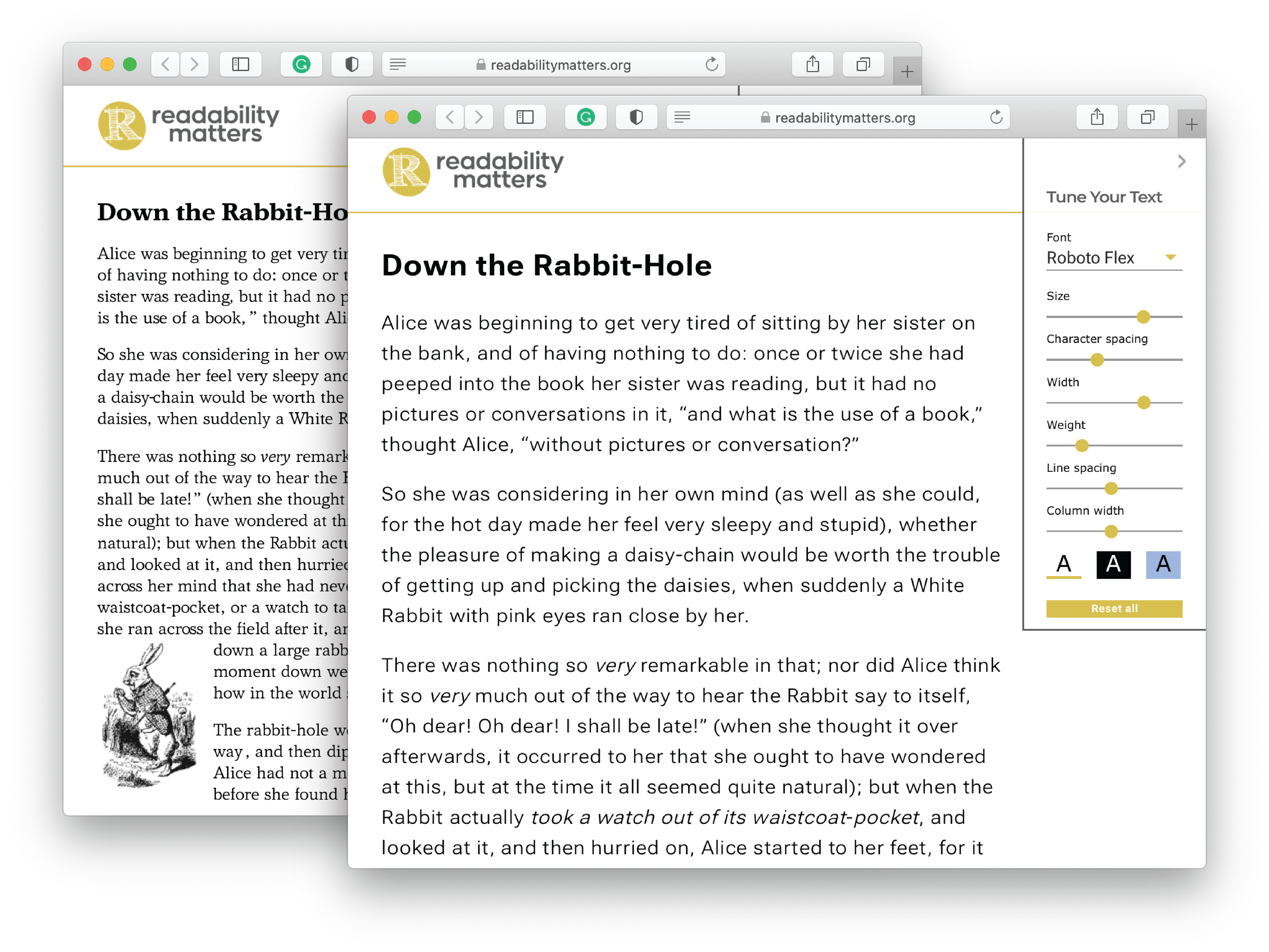
RESEARCH VALIDATES THE READABILITY PROMISE
Technology offers the potential for scale. Readability Matters completed studies and a tech proof of concept with Adobe demonstrating that using different formats, readers' speed and accuracy improved significantly across the tested classrooms. We use speed to draw an inference about how easily the reader is decoding. (Shanahan) Changes also occurred in the reader's phrasing; some went from 3-word phrases to 5 and 6-word phrases, an indication of increased comprehension.
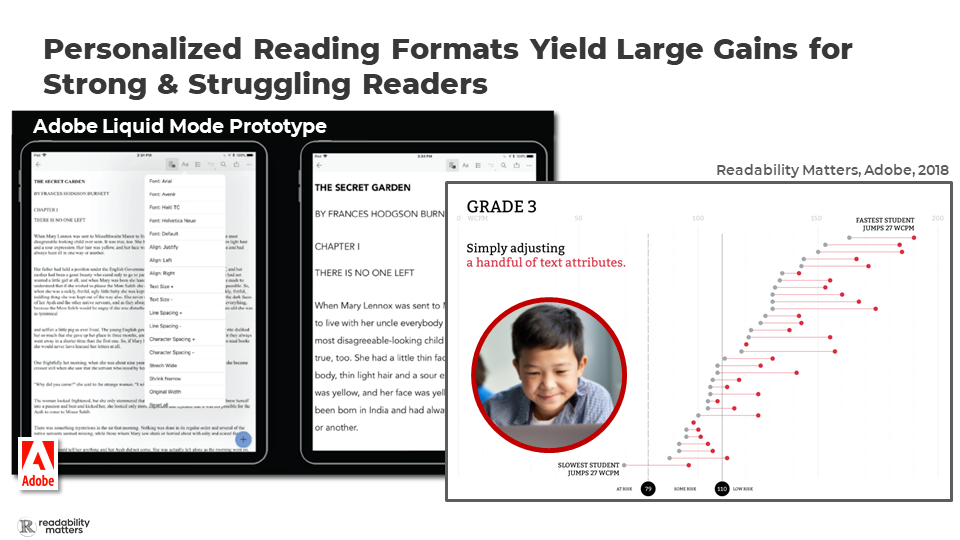
Comprehension is the goal of reading. Experts from cognitive science, reading edTech and typography joined Readability Matter to assess the impact of typographical changes on comprehension in 94 K-8th grade students. On average, the students gained 21% in both reading speed and comprehension accuracy using their best format. (See the research paper.)
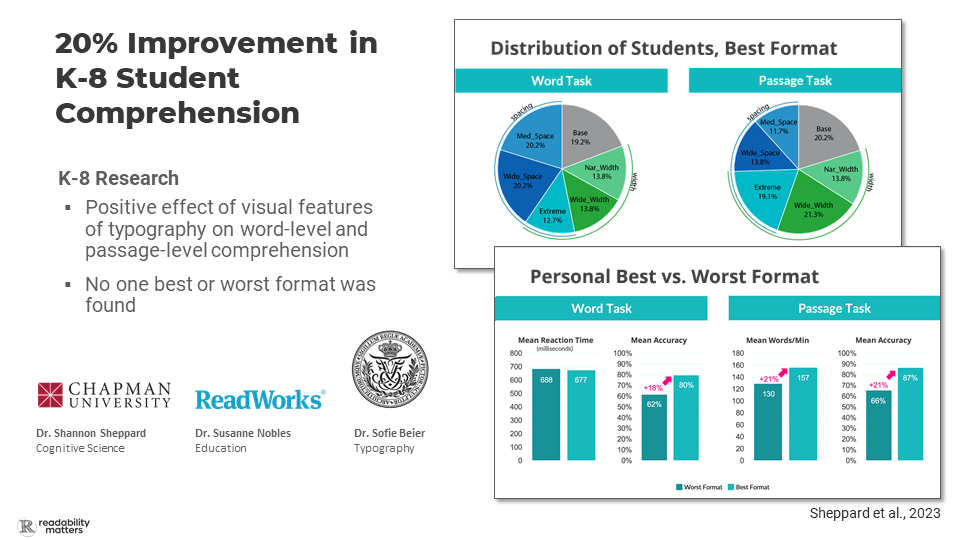
A scalable implementation model is required for classroom use. This study used a prototype Oral Reading Fluency assessment to determine a student’s best reading text format. That format was passed to the high-quality reading content platform, ReadWorks, and used by students to complete daily reading. The study team led by Drs. Gerald Tindal and Joe Nese of the University of Oregon will evaluate the effect of personalized reading intervention on fluency development. (Read more here.)
Readability research has expanded. The readability research community has grown to include 100 cross-disciplinary researchers who have published over 30 academic papers. The group meets monthly to share insights and stay informed about emerging trends and significant findings.
Together with Adobe, Google, and the University of Central Florida, Readability Matters founded The Readability (research) Consortium. (See the announcement video here.)
CAST RELEASES NEW UDL GUIDELINES, ADDING READABILITY CONSIDERATIONS
In July 2024, CAST.org released version 3.0 of the Universal Design for Learning (UDL) Guidelines, featuring significant updates to Consideration 1.1, which focuses on customizing the display of information. The update now includes recommendations that information creators and distributors offer information in accessible formats so that the perceptual features can be customized, including font, text size, character and line spacing, character width, background color, and text colors.
This ensures that information is accessible and adaptable to individual needs, reinforcing the value of customizable perceptual features in educational materials. Learn more about the new Readability Considerations.
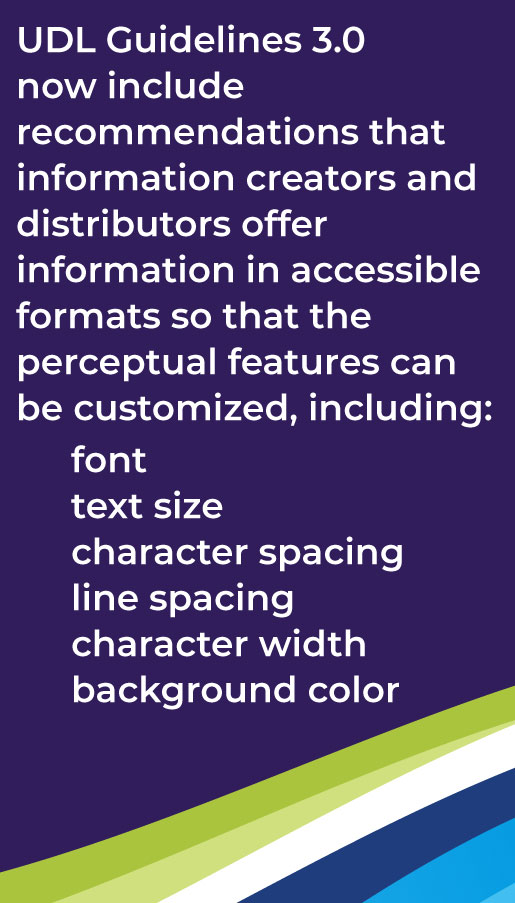
WHAT CAN EDUCATORS AND LEARNERS DO TODAY?
Reading apps are evolving rapidly, and a variety of Readability features are appearing in many of them. While someday, soon, reading applications will help readers adjust the text to their best reading format, there are things to do today. Uncover the readability features that may enhance a student's reading experience–adjust the base font, character spacing, character width, and more–to see what works best. (See the Readability Tech Tips article for more information.)
By enabling users to personalize the display of information, we empower them to interact with technology in a way that best suits their unique needs.
JOIN THE COMMUNITY OF READABILITY THINKERS AND DOERS
Readability Matters, a tech-for-good nonprofit, is working with an ever-growing community of scientists and engineers to reinvent reading and make each reader the best reader they can be.
The success of readers everywhere depends on your engagement. Please work with us to prototype or test new readability features and tools and expand the ecosystem of partners disseminating better reading technologies. Contact us at hello@ReadabilityMatters.org to get involved.
